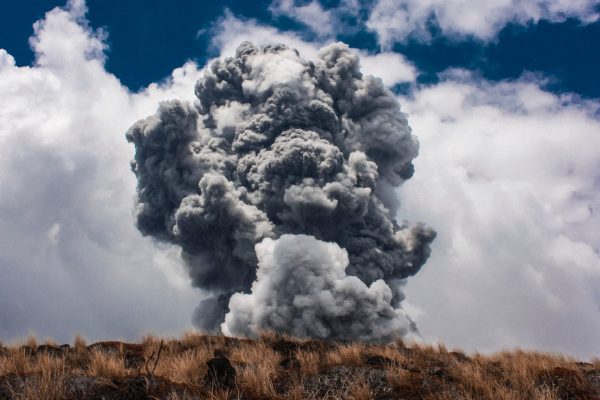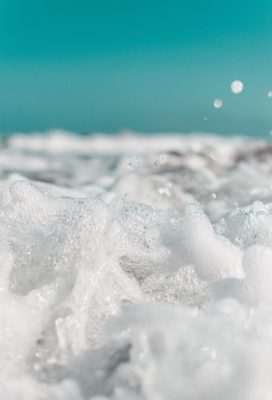Uncategorized
Palm Oil is Cheap, Convenient, and Wildly Destructive
We give an emphatic no to using palm oil in our soap, and the destruction that comes with it.
Mass deforestation, wildlife displacement (and slaughter), human rights abuse, and increased carbon emissions… it goes on.
Allow us to explain why palm oil is bad for the planet.

FIRST, WHY IS PALM OIL SO POPULAR?
Palm oil is extracted from the fruit of the oil palm, a tree native to the West African tropics. It’s cheap, it’s versatile, and it’s incredibly popular, present in things like pizza dough and soda, to cosmetics and even biofuel, but especially in the world of soap making.
Palm oil gives soap a large, bubbly lather, and makes for a harder bar- two things strived for by artisans. It being inexpensive is the cherry on top of a sinfully sweet pie, but it comes at a bitter cost.
Though native to West Africa, these palms have seen success within plantations in tropical countries like Malaysia and Indonesia. These plantations come at the expense of virgin rainforests, their destruction exchanged for profit.

A REAL LIFE FERN GULLY
They are Tearing Down Trees
Trees are torn down and set fire to make room for the fruitful mass of oil palms. The felling and burning of these trees pollutes our air, increasing greenhouse gases. Their ash serves as an advantage for plantation owners, naturally fertilizing the soil for the newly planted palms, thereby cutting costs of planting materials.
All about savin’ that dollar, baby.
Deforestation leads to some big no-no’s: climate change, soil erosion, desertification, and more.
And it isn’t only deforestation.
They are Draining the Peat Swamps
These plantations are birthed from the conversion of peat swamp forests. A peat swamp is a tropical, moist forest, where leaves, wood, and other organic matter are prevented from fully decomposing due to severely waterlogged soil. Because of this, these swamps are massive reserves of carbon. They’re like, a pretty big ecological deal.
To convert these peat swamps to agricultural land, they need to first be drained. Once they’re drained, all that organic matter that wasn’t decomposed now has the chance to oxidize, and all that trapped carbon is now carbon dioxide in our air- a lot of it.
Hectares upon hectares upon hectares worth of it.

They are Killing Our Wildlife 
What’s more, local wildlife are forced out of their homes, such as Sumatran tigers, rhinos, and the critically endangered Orangutan.
The poor orangutans who eventually return to their home (excuse me, the plantation) in search of food are perceived as agricultural pests and are exterminated “accordingly” in grossly inhumane ways.
It’s gross and saddening and infuriating all at once.
BUT, ARE THERE ANY SUSTAINABLE PALM OILS?
Well, maybe. Sustainable palm oil is still derived from the fruit of the oil palms, however these palms are planted on already wide open forest, without actively tearing down trees or destroying precious biomes.
A Loophole in Sustainability?
The only problem with this is that the majority of these plantations are built on land that has already been torn down in the not so distant past. One study showed that 85% of certified plantations in Borneo were still forests lived in by orangutans in 1999, and that most were completely covered by tropical forests in the mid 80s before being converted to plantations in 1990.
These plantations were later certified sustainable in the 2000s.
A Very Blurred Line
The question is, is a certified sustainable plantation built on recently deforested land really sustainable?
Will you be able to see environmental impacts from earlier deforestation?
Will a certificate be enough to move on and forget the (fairly recent) past?
Is there room for corruption in a largely profitable, ubiquitous industry?
Will a forest torn down today be certified tomorrow?
I guess that’s five questions.
A PERSONAL CHOICE
We aren’t here to slam anyone for choosing to use palm oils in their recipes, it isn’t our place and we don’t want it to be – it’s entirely a personal decision. We only wish to lay out some very real issues, and explain why we have chosen a different path.
 What We Use Instead for the Same Bubbly Results
What We Use Instead for the Same Bubbly Results
Everyone likes a bubbly lather though, right? It’s a sign of cleanliness, of luxury.
So how do we achieve this if we don’t use palm oil? Well, we have specifically formulated the perfect combination of oils and lye for a hard, long lasting bar with a big, bubbly lather.
We use quite a bit of coconut oil in our recipes, an oil with super cleansing and big-lather properties. Typically these percentages are kept a bit lower so to not dry out the skin.
To avoid this, we’ve increased our superfat (that is, the amount of unsaponified, floating oils) in our recipes to give our soaps a luxurious, creamy, and hydrating feel, and an AWESOME lather.
We’ll spare you the rest of the science talk, just know we got your (and the orangutans’) back.
You can find a video of our lathering in action, here.




Id like to thank you for the efforts youve put in writing this website. I really hope to see the same high-grade blog posts from you in the future as well. In truth, your creative writing abilities has motivated me to get my own, personal site now 😉